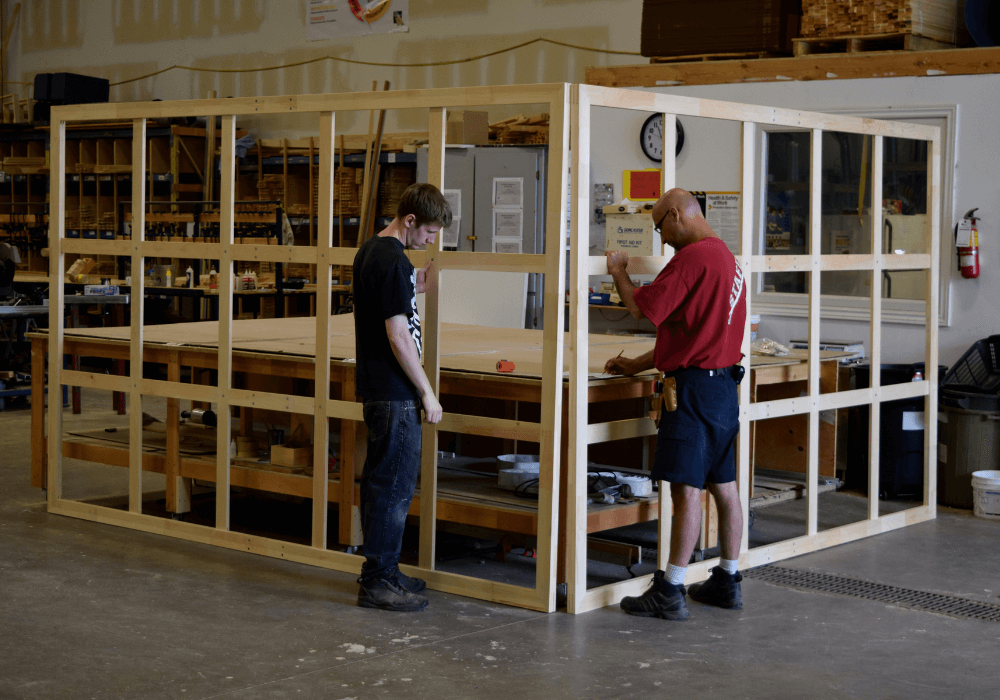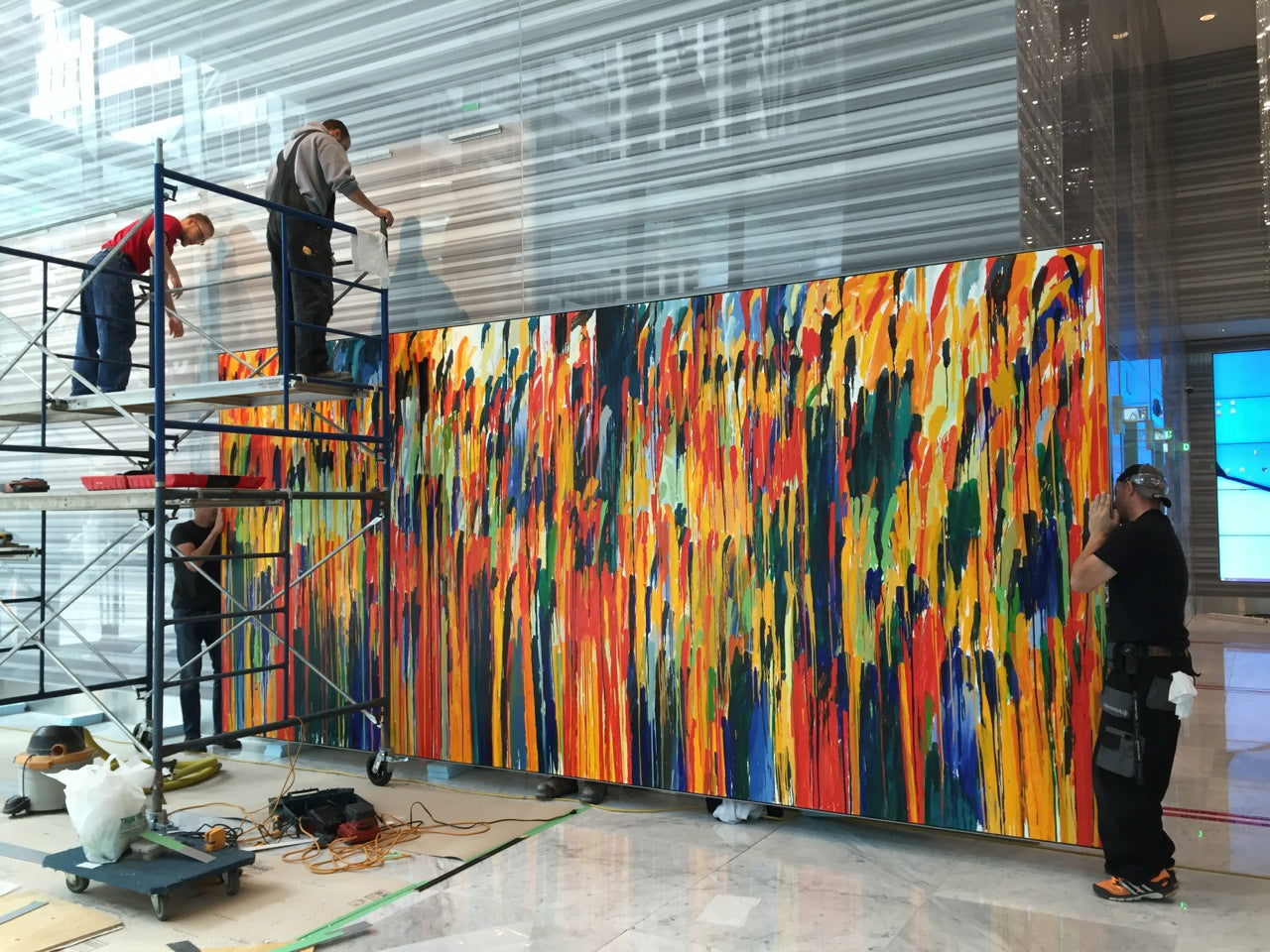Sometimes, your next great painting idea just doesn’t fit within the confines of a standard rectangular or square canvas. Irregularly shaped canvases can add depth and interest to your piece and, with proper engineering, are just as stable and strong as regular canvas stretcher frames.
In this post, we’ll have a look at the construction of a 2-piece canvas with a large hole feature. You can see what it takes to bring a project like this together and–you never know–might just get inspired to make an unusually shaped painting of your own!
An artist came to us with a need to do something different, and their vision was unique right off the hop. They wanted their blank canvas to create a peek-a-boo effect; to reveal a different, underlying image within a porthole-like canvas “window.”

A custom canvas was needed to help the artist achieve their peephole effect painting.
In order to achieve this effect without compromising the integrity of the stretcher frame, they actually needed two stretcher frames–one larger canvas with a circular cut-out, and a smaller one behind it.
There are three main challenges in creating this type of porthole in a canvas:
- You still need the canvas stretched taut to support the weight of your paint and any other materials incorporated into the piece.
- You need a smooth, consistent edge to pull the canvas tight within the porthole without damaging it.
- While accomplishing this, you must protect the integrity of the stretcher frame and avoid putting undue stress on any one part of the frame.
We decided that the best way to achieve this was to create a circular frame for the porthole, that would act as a secondary stretcher within the frame.
Learn More About Irregularly Shaped Stretchers
First, we stretched blank canvas over the larger frame–the one that would make up the largest portion of the painting. As with any blank canvas, you want to make sure you’re stretching over a frame that is:
- Keyable, so you can adjust the tension of the canvas over time
- Beveled, to prevent stretcher marks and canvas wear
- Crafted with quality, kiln-dried wood to ensure strength over time
You can see step-by-step instructions on stretching your canvas here(with video).

A smaller, circular wooden frame adhered to the back of the first canvas is the basis for stapling the peephole cutout.
A thin circular disc-shaped frame was manufactured with a raised edge to fit against the canvas. Small cuts in the canvas enabled us to ensure even tension was applied at each staple point around the disc frame.
As you can see in the image above, it’s important to protect the canvas with a soft cloth over a flat surface, to prevent introducing any markings or punctures from the pressure of stapling.
The angled cross-bar pieces that look like shims gave us structure to screw the second canvas into.

Cross bracing helps hold the two pieces together and also provides additional support for the weight of the combined canvases.
With the second, backing canvas installed and cross bracing in place, our peephole canvas is ready to go. The artist has two smooth, taut surfaces to gesso and paint, and proper construction ensures this frame will keep the canvas in top shape for the life of the piece.
With custom blank canvas, your artwork is only as limited as your imagination! Give us a call today to see what we can do to bring your vision to life—even if your blank canvas shape and size is unconventional.
Learn More About Irregularly Shaped Stretchers








